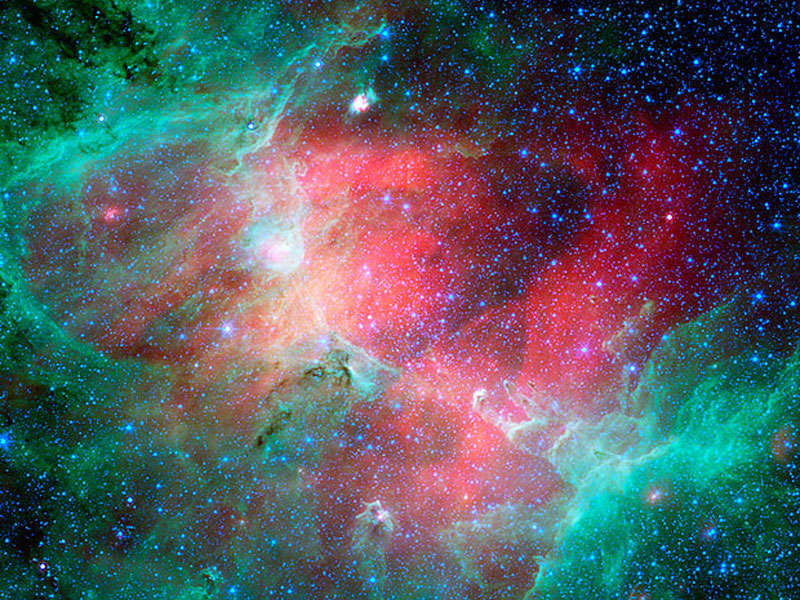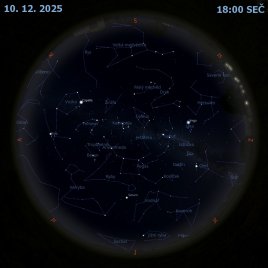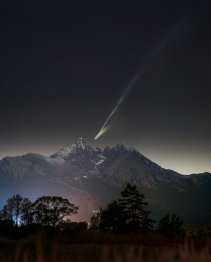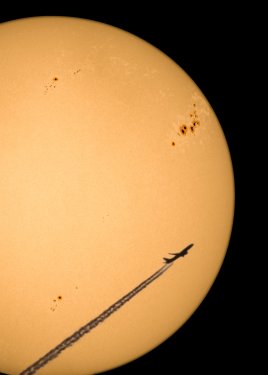Orlí mlhovina infračerveně

Uznání: NASA/JPL-Caltech/N. Flagey (IAS/SSC) & A. Noriega-Crespo (SSC/Caltech)
In visible light, the whole thing looks like an eagle. The region was captured recently in unprecedented detail in infrared light by the robotic orbiting Spitzer Space Telescope (SSC). Shown above, the infrared image allows observers to peer through normally opaque dust and so better capture the full complexity of the Eagle Nebula star forming region. In particular, the three famous pillars near the image center are seen bathed in dust likely warmed by a supernova explosion. The warm dust is digitally assigned the false color of red. Also visible, near the bottom of the image, is ten light-year long pillar sometimes dubbed the Fairy of Eagle Nebula. The greater Eagle emission nebula, tagged M16, lies about 6500 light years away, spans about 20 light-years, and is visible with binoculars toward the constellation of Serpens.
NASA Official: Phillip Newman Specific rights apply. NASA Web Privacy Policy and Important Notices
A service of: ASD at NASA / GSFC & Michigan Tech. U.
Odkaz na originální APOD


